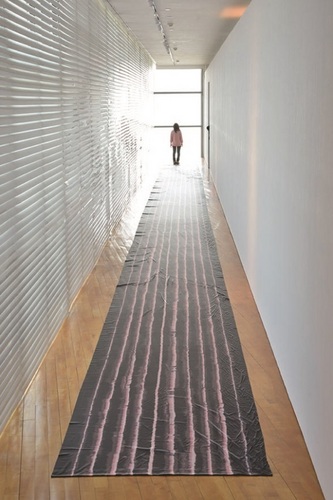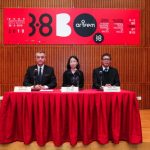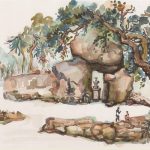 Wong Weng Io/Gesture repeats itself constantly, habits remains constant throughout, midst and last/2017
Wong Weng Io/Gesture repeats itself constantly, habits remains constant throughout, midst and last/2017
Jointly organised by the Macao Museum of Art (MAM), under the auspices of the Cultural Affairs Bureau, and Albergue SCM, the exhibition “Women Artists – 1st International Biennial of Macao” features 142 works from the 1970’s up to present created by 132 women artists from 23 countries and regions, including paintings, silkscreen printings, drawings, sculptures, installations and videos, among others. This exhibition aims to enhance the reputation of contemporary female artists and show the impact of their creative works on society and culture, as well as reveal the diverse roles of female identity, the multiple interpretations of women and artistic practices that transcend gender differences. The opening ceremony of the biennial will be held on Thursday, 8 March, at 6:30pm, on the 3rd floor of the MAM and is open to the general public.
Since the 1990’s, the importance of the work of female artists has received international attention, and its impact on society and culture has been gradually increasing. Last year, the MAM organised the exhibition “Representing Women through MAM Collection – 19th and 20th Century”, featuring paintings from its collection of the 19th and 20th centuries and showing the evolution of the female image in art history, which received an enthusiastic response from the public and planned to hold another exhibition dedicated to female artists in order to complete this ongoing research project. Also in 2017, the Albergue SCM organised the exhibition “28 Female Artists + 28 Works”, featuring original works by female artists from Macao and Portuguese-speaking countries and giving rise to hold the planning of “Women Artists – 1st International Biennial of Macao”. Both of these exhibitions focused on the status of women in the contemporary art world and other complementary elements. In view of the above, both entities contributed with different ideas and visions to launch this larger exhibition “Women Artists – 1st International Biennial of Macao”, thereby hoping to open up new paths for reflection.
Women artists from Mainland China, Macao, Hong Kong, Taiwan, South Korea, Japan, East Timor, Russia, India, Iran, Angola, Guinea-Bissau, Sao Tome and Principe, Cape Verde, Portugal, Spain, United Kingdom, Georgia, Brazil, United States and Australia, among other countries and regions, were invited to participate in this biennial, which also includes works by female artists from the MAM’s collection. These artists are from different generations, regions and cultural backgrounds, their personal feelings and creativity are different, and their works will show the public the unique female art world.
The biennial comprises two sections. The first section showcases 41 works from the MAM’s collection of the 1970’s to present and arranged in 10-year periods, which bring the public’s awareness to MAM’s achievements in its study of works by innovative female artists and of Macao’s art history; exhibited pieces include not only selected works from series of works by the artists but also large-scale works by invited artists. The second section included works by 101 female artists active in the international art circles from the collection of Albergue SCM.
The exhibition “Women Artists – 1st International Biennial of Macao” is open until 13 May 2018. The Macao Museum of Art, located at Avenida Xian Xing Hai, NAPE, is open daily from 10am to 7pm (no admission after 6:30pm), including on public holidays and closes on Mondays. Admission is free. For more information, please visit the MAM website at www.MAM.gov.mo. For enquiries, please contact MAM through tel. no. 8791 9814 during the opening hours.
View gallery



